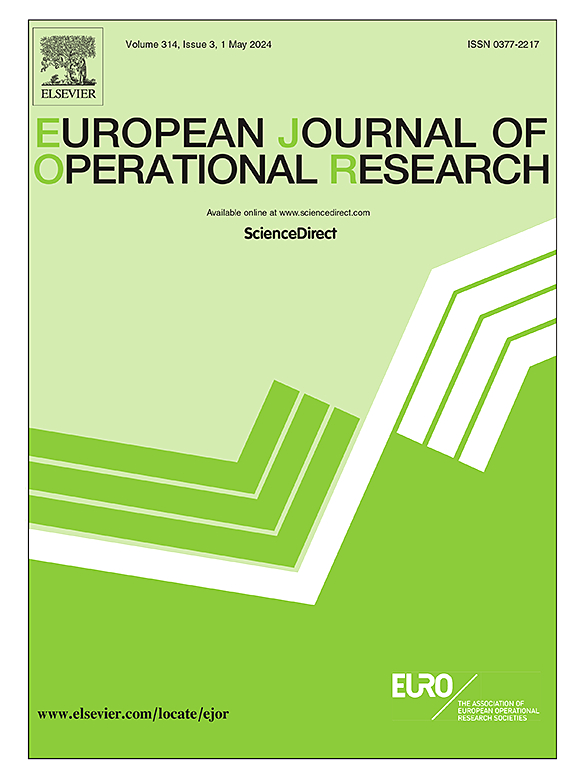On the transition from make-to-stock to make-to-order
IF 6
2区 管理学
Q1 OPERATIONS RESEARCH & MANAGEMENT SCIENCE
引用次数: 0
Abstract
Value stream mapping reveals there are two replenishment decisions and three classes of lead times in the manufacturing echelon of a supply chain. The first replenishment decision releases production orders to maintain the finished goods inventory (FGI), and the second replenishment decision issues supplier orders to replenish the raw materials inventory (RMI). The three different classes of lead times are (a) customer lead time, (b) production lead time, and (c) supplier lead time. We develop a z-transform transfer function model of this system to investigate its dynamic performance. We find that FGI costs increase in the production lead time and decrease in the customer lead time, whereas RMI costs increase in both the production lead time and the supplier lead time. We capture the dynamics of, and transition between, make-to-stock (MTS) and make-to-order (MTO) settings in a single unified model. We show that when transitioning from an MTS to an MTO supply chain, RMI costs decrease in the customer lead time for positively correlated demand and exhibit an odd-even oscillation for negatively correlated demand.关于从制造到库存到制造到订单的转变
价值流图显示,在供应链的制造梯队中有两种补货决策和三类交货时间。第一次补货决策发布生产订单以维持成品库存(FGI),第二次补货决策发布供应商订单以补充原材料库存(RMI)。三种不同的前置时间是(a)客户前置时间,(b)生产前置时间,和(c)供应商前置时间。建立了系统的z变换传递函数模型,研究了系统的动态性能。我们发现FGI成本在生产提前期增加,在客户提前期减少,而RMI成本在生产提前期和供应商提前期都增加。我们在一个单一的统一模型中捕获了按库存生产(MTS)和按订单生产(MTO)设置的动态和转换。我们表明,当从MTS供应链过渡到MTO供应链时,RMI成本在正相关需求的客户交货期中降低,并且在负相关需求中表现出奇偶振荡。
本文章由计算机程序翻译,如有差异,请以英文原文为准。
求助全文
约1分钟内获得全文
求助全文
来源期刊

European Journal of Operational Research
管理科学-运筹学与管理科学
CiteScore
11.90
自引率
9.40%
发文量
786
审稿时长
8.2 months
期刊介绍:
The European Journal of Operational Research (EJOR) publishes high quality, original papers that contribute to the methodology of operational research (OR) and to the practice of decision making.
 求助内容:
求助内容: 应助结果提醒方式:
应助结果提醒方式:


